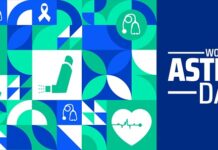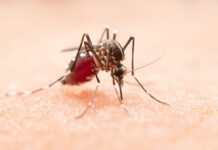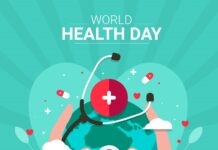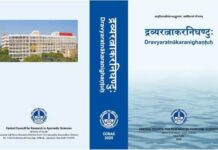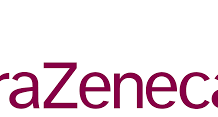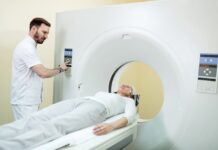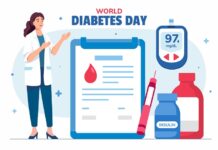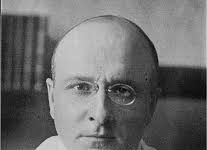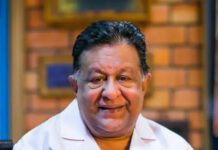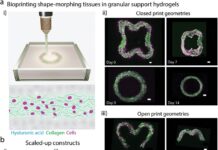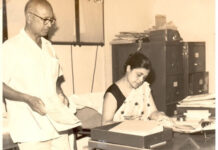Heart Disease, and Acute Coronary Events are being increasingly heard of in current times, even in young people. On World Heart Day 29th September, an interview with Cardiologist Dr Siddharth Dagli, gives useful insights to physicians and primary care givers on risk factors, preventive care, screening tests, recognizing symptoms, and timely action, diagnosis and intervention for cardiovascular disease.
- What are the recognized risk factors for cardiovascular disease that the physician should identify, control and monitor in patients independent of age?
Ans: While family history is an uncontrollable risk factor, the recognized risk factors for cardiovascular disease (CVD) regardless of age, that can be controlled and monitored include:
High blood pressure (Hypertension) – Puts strain on the heart and blood vessels.
High cholesterol levels – Can lead to plaque buildup in arteries, increasing the risk of heart attack or stroke.
Smoking – Damages blood vessels and reduces oxygen to the heart.
Diabetes – Poorly managed blood sugar levels can damage blood vessels.
Obesity – Excess weight affects blood pressure (BP), cholesterol, and insulin resistance.
Physical inactivity – Lack of exercise can increase risk of obesity and high BP.
Unhealthy diet – Diets high in saturated fats, salt, and sugar increase CVD risk.
Excessive alcohol consumption – Can raise BP and contribute to heart disease.
Stress – Chronic stress may lead to unhealthy behaviours (smoking, overeating) and directly affect heart health.
Reducing these risk factors through advice of lifestyle changes by the physician can significantly lower the likelihood of cardiovascular disease.
- If the person has any of the above risk factors, what kind of care should he/she be advised by the physician to take in terms of lifestyle and frequency of health check-up?How often and what lab tests should be done in such people?
Ans: If a person has any of the above risk factors for cardiovascular disease (CVD), adopting a healthy lifestyle and scheduling regular health check-ups are essential for reducing the risk. Here’s a guide on the required care to be recommended by the physician for these patients:
Lifestyle Modification
- Healthy Diet:Advise a heart-healthy diet, such as the Mediterraneanor **DASH (Dietary Approaches to Stop Hypertension) diet.Recommend limited intake of saturated fats, trans fats, cholesterol, salt, and refined sugars, with increased consumption of fruits, vegetables, whole grains, lean proteins, and healthy fats (e.g., from fish, nuts, and olive oil).
- Regular Physical Activity: Patients should aim for at least 150 minutes of moderate-intensity aerobic activity (e.g., brisk walking) per week, or 75 minutes of vigorous-intensity exercise (e.g., running), along with strength training exercises twice a week.
- Weight Management:Advise patients to maintain a healthy weight. Even a 5-10% weight reductionin overweight individuals can significantly reduce risk factors like high blood pressure and diabetes.
- Quit Smoking: Stopping smoking dramatically reduces heart disease risk over time. Advise to seek help through counselling, medications, or nicotine replacement therapy if needed.
- Limit Alcohol Consumption:Recommend moderate alcohol intake (up to 1 drink per day for women, 2 for men).
- Stress Management:Recommend the practice of relaxation techniques like meditation, yoga, or deep breathing exercises.
- Regular sleep (7-8 hours per night) is essential for overall health, and should be advised to all patients.
Health Check-ups
- a) Frequency of Health Check-ups:
- Annually: Routine check-ups with a healthcare provider to monitor risk factors.
- Every 6 months: If you already have risk factors such as high blood pressure, high cholesterol, or diabetes, more frequent visits may be advised.
- b) Lab Tests & Health Monitoring:
- Blood Pressure Monitoring: Check at least once a year if normal; more frequently (every 3-6 months) if elevated or if on treatment.
- Cholesterol Levels:Lipid profile test every 4-6 years in healthy adults.More frequent check needed (annually or biannually) if cholesterol levels are high or one is on cholesterol-lowering medications.
- Blood Sugar Monitoring (Fasting Blood Sugar or HbA1c):Annual testing for people with risk factors.If prediabetic or diabetic, test every3-6 months(HbA1c).
- Weight and Body Mass Index (BMI):Check at least once a year, but more often if one is trying to manage your weight.
- Kidney Function (Creatinine, BUN) and Electrolytes:Annually if hypertensive, diabetic, or taking medications that affect the kidneys.
- Electrocardiogram (ECG/EKG): Baseline test in individuals with multiple risk factors; repeated if symptoms (chest pain, shortness of breath) occur.
- Liver Function Tests:If one is taking medications that can affect liver health, like statins (for high cholesterol), this should be checked periodically.
- Advanced Tests (if necessary):These include aCoronary Calcium Scan to assess the amount of plaque buildup in the coronary arteries, and Echocardiogram or Stress Test for those with symptoms or high risk of heart disease.
Key Takeaways
Frequency of above tests depends on personal risk factors and doctor recommendations, but basic checks (blood pressure, cholesterol, blood sugar) should be advised at least annually or more frequently for those at higher risk.
Focus on preventive care by managing lifestyle factors and regular screenings. Close monitoring and preventive action can greatly reduce the chances of heart disease progression.
- For the general population with no mentioned risk factors, what are the early or subtle signs that doctors should recognize of any heart disease? How often and what lab tests should these people be recommended by the physician?
Ans: Even if a person does not have obvious risk factors for cardiovascular disease (CVD), it’s important to recognize early or subtle signs of heart disease. While such individuals are at lower risk, heart issues can still develop, sometimes with minimal symptoms. Here are the early signs, as well as guidance on screening and tests:
Early or Subtle Signs of Heart Disease:
- Shortness of Breath (dyspnoea):Difficulty breathing or feeling winded during normal activities (e.g., walking, climbing stairs) can be an early sign of heart problems.
- Chest Discomfort or Pain (Angina):Any unusual pressure, tightness, or discomfort in the chest, especially during physical activity or stress, could indicate an underlying heart condition. This may feel like heaviness or burning.
- Fatigue:Unexplained fatigue or a feeling of weakness, especially after light activity, may signal a heart problem.
- Palpitations:Feeling like your heart is racing, skipping beats, or beating irregularly could be an indicator of arrhythmias or other heart conditions.
- Swelling in the Legs, Ankles, or Feet: Swelling (edema) can be a sign of heart failure, where the heart is not pumping blood effectively.
- Dizziness or Fainting:Feeling lightheaded, dizzy, or fainting (syncope) can be an early sign of abnormal heart rhythms or other heart conditions.
- Persistent Cough or Wheezing:A long-lasting cough, especially with pink-tinged mucus, can indicate fluid buildup due to heart failure.
- Jaw, Neck, or Back Pain:Sometimes heart-related discomfort manifests in non-chest areas, especially in women. Jaw, neck, back, or arm pain without a clear cause can be a warning sign of heart issues.
- High sensitive troponin I test can help to proactively identify individuals at high cardiovascular risk long before symptoms appear. This is a very important test to detect acute coronary events even at times before the ECG changes appear and should be ordered by physicians for all cases of suspected acute coronary syndrome.
Health Check-up and Lab Tests for Low-Risk Individuals:
Even in the absence of risk factors, periodic health check-ups can help detect heart disease early. Here’s what low-risk individuals should focus on:
- a) Health Check-up Frequency:
– Every 2-3 years: For young, healthy adults with no symptoms or risk factors.
– Annually: After age 40 or sooner if there are concerns about symptoms or family history of heart disease.
- b) Lab Tests & Monitoring:
- i) Blood Pressure Check:
– At least every 2 years if normal (below 120/80 mmHg).
– More frequent monitoring if readings are above normal or as recommended by a healthcare provider.
ii). Cholesterol Levels (Lipid Profile):
– Test every 4-6 years for healthy adults. If the cholesterol levels are borderline or high, more frequent testing may be needed.
iii). Blood Sugar (Fasting Blood Glucose or HbA1c):
– Every 3 years starting at age 45 to screen for diabetes.
– More frequent testing if there are signs of diabetes or family history.
iv). Body Weight and Body Mass Index (BMI):
– Measured annually to ensure weight is in a healthy range. Unexplained weight changes could signal heart or metabolic issues.
v). Electrocardiogram (ECG/EKG):
– Baseline ECG around age 40 or earlier if there are symptoms (like palpitations) or a strong family history of heart disease. Repeat if symptoms arise.
- vi) Cardiac Stress Test:
– Recommended for those who begin to develop symptoms such as shortness of breath, chest pain during exercise, or for those with a family history of early heart disease.
vii) Coronary Artery Calcium (CAC) Score:
– A non-invasive scanthat measures calcium deposits in the coronary arteries. It’s recommended for individuals with a moderate risk or family history of heart disease, even if there are no symptoms. It can be considered around age 40-50.
viii) Inflammatory Markers (e.g., CRP, hs-CRP):
– Testing for high-sensitivity C-reactive protein (hs-CRP) can help identify inflammation, which may indicate a higher risk of heart disease, even without traditional risk factors.
Early Detection and Preventive Care: Even for people without traditional risk factors, lifestyle changes can prevent the development of heart disease. The same lifestyle guidelines apply (healthy diet, regular exercise, stress management, avoiding smoking, and limiting alcohol).By keeping a close watch on early signs and maintaining regular check-ups, even those with no apparent risk factors can detect and prevent heart disease at an early stage.
- What kind of events can precipitate an acute coronary episode in people, and what care should they be advised by the physician when undertaking such activities? (like gym, marathons, heavy exercise, trekking, overeating, etc)
Ans: Certain events or activities can precipitate an acute coronary episode, such as a heart attack, particularly in people with underlying heart disease or risk factors. These triggers often involve sudden physical or emotional stress, which can increase the demand on the heart or disrupt blood flow to the heart muscle.
Here’s a list of events or situations that may lead to an acute coronary episode and the precautions that should be advised by the physician:
- a) Strenuous Physical Activity: Like Gym workouts, marathons, heavy lifting, trekking, sprinting.
– Risk: Sudden intense exercise, especially in those who are not used to it or have underlying heart issues, can strain the heart. This may trigger a heart attack, particularly if there’s already plaque in the arteries.
– Precautions: Recommend gradually building up physical activity levels. Warm-up before and cool down after exercise. Avoid over-exertion and sudden, high-intensity exercises without proper conditioning. Advise people with heart risk factors to have a health check-up before starting new or intense exercise routines.Heart rate monitors may be used to avoid exceeding safe limits.
- b) Emotional Stress or Shock: Like bereavement, divorce, job loss, financial stress, or sudden bad news.
– Risk: Intense emotional stress can lead to a surge in stress hormones (like adrenaline), which can cause a temporary weakening of the heart muscle (Takotsubo cardiomyopathy or “broken heart syndrome”) or precipitate a heart attack in people with coronary artery disease.
– Precautions: Patients should practice stress-management techniques such as deep breathing, yoga, or meditation.Consider therapy or counselling for them to handle severe emotional stress.Strongly recommend seeking medical help if stress leads to symptoms like chest pain, palpitations, or shortness of breath.
- c) Cold Weather or Sudden Temperature Changes: Like exercising outdoors in the cold, sudden exposure to very cold environments.
– Risk: Cold weather causes blood vessels to constrict, which raises blood pressure and increases the heart’s workload, leading to a higher risk of heart attacks.
– Precautions:Advise dressing warmly with layer clothing to maintain body heat, and to avoid sudden, strenuous activities in cold weather.Better to stay indoors on extremely cold days, particularly for those with known heart disease.
- d) Overeating or Large Meals: Like heavy or rich meals, holiday feasts, buffet-style eating.
– Risk: Overeating, especially fatty and salty foods, can raise blood pressure and cholesterol levels. It also diverts blood to the digestive system, putting extra strain on the heart. This can lead to a condition called “holiday heart syndrome,” where overeating and excessive alcohol trigger heart issues.
– Precautions: Recommend eating smaller, well-balanced meals, and avoiding high-fat, salty, and sugary foods in large quantities.Staying hydrated and avoiding overeating, especially in one sitting is important.
- e) Alcohol or Drug Use: Includes excessive alcohol consumption, binge drinking, stimulant drug use (e.g., cocaine, amphetamines).
– Risk: Alcohol and drugs can cause abnormal heart rhythms (arrhythmias), increase blood pressure, and lead to dehydration, all of which strain the heart and can precipitate an acute coronary episode.
– Precautions: Advise drinking alcohol in moderation (up to 1 drink per day for women, 2 for men), avoiding binge drinking,never mixing alcohol with stimulants, and refraining from drug use, especially stimulants that affect the heart.
- f) Sudden Physical or Sexual Activity: Includes sudden physical efforts like running to catch a bus or intense sexual activity.
– Risk: Sudden exertion can increase the heart rate and blood pressure, leading to an increased demand for oxygen, which could result in a heart attack, especially in those with underlying heart disease.
– Precautions:Patient should be made aware of being mindful of physical limits, especially if they have heart disease, and engage in regular physical activity to improve cardiovascular fitness, making sudden exertion less risky.
- g) Dehydration or Heat Exposure: Includes working or exercising in hot climates, not drinking enough water.
– Risk: Dehydration thickens the blood, making it more likely to clot. It also lowers blood pressure, reducing blood flow to the heart. Heat can further strain the heart by causing it to work harder to cool the body.
– Precautions: Advise patients to always stay hydrated, especially during hot weather or intense activity, avoid exercising outdoors during extreme heat, and take frequent breaks and drink water regularly.
- h) Infections or Severe Illness: Like Flu, pneumonia, COVID-19, etc.
– Risk: Infections can increase inflammation and strain the heart. Flu and other illnesses can exacerbate pre-existing heart conditions and trigger acute events like heart attacks.
– Precautions: Advise should be given to get vaccinated against the flu and pneumonia if eligible, and seeking prompt treatment for infections especially respiratory.Monitor heart symptoms closely of such patients if they have a history of heart disease and develop an infection.
- i) Smoking or Exposure to Smoke: Includes active smoking, and exposure to second-hand smoke.
– Risk: Smoking causes blood vessels to constrict and can lead to plaque rupture, triggering a heart attack.
– Precautions: Quitting smoking and avoiding exposure to second-hand smoke should be strongly emphasized, as well as seeking support for smoking cessation if needed.
- j) Sleep Deprivation or Poor Sleep Quality: Includes chronic insomnia, and sleep apnea.
– Risk:Poor sleep can lead to higher blood pressure and inflammation, which increases the risk of coronary events.
– Precautions: 7-8 hours of quality sleep per night is important, and screening for sleep apnea should be advised if patients/partner give history of loud snoring, gasping during sleep, or excessive daytime sleepiness.
- k) Anger or Intense Emotions: Like sudden rage, or emotional outbursts.
– Risk: Intense anger increases adrenaline, which raises blood pressure and heart rate, potentially triggering a heart attack.
– Precautions: Patients should be advised to manage emotions with anger-management strategies, relaxation techniques, or therapy, and take deep breaths and try to de-escalate stressful situations.
Key Takeaways:
– Be aware of situations that can strain the heart or increase the risk of a coronary episode.
– Individuals with heart disease or risk factors should always be advised by their doctor before engaging in intense physical activities.
– Manage risk by pacing activities, avoiding sudden stressors, and making heart-healthy lifestyle choices (exercise, balanced diet, stress management) are important.
– Advise patients to always listen to their body, and immediately report unusual symptoms (chest pain, shortness of breath, dizziness).
- Which medicines should patients be advised to keep at home that can be given during an acute cardiac event to make the patient more comfortable and buy time while waiting for ambulance. What should be the immediate actions advised to near ones when such an event occurs?
Ans: During an acute cardiac event, prompt action can save a life while waiting for an ambulance. Having certain medications on hand and knowing the immediate steps to take can help make the patient more comfortable and potentially reduce the severity of the event. Here’s a guide on what medicines patients can be advised to keep and the immediate actions to take:
Medications to Keep at Home for a Cardiac Emergency:
- Aspirin (81-325 mg): Aspirin can help thin the blood and prevent further blood clotting, which can reduce the severity of a heart attack.Give one regular 325 mg tablet (or 2-4 low-dose 81 mg tablets) to the person. Patient should be told to chew the tablet rather than swallow whole for faster absorption. If the person is conscious and not allergic to aspirin, this should be given as soon as a heart attack is suspected.
- Nitroglycerin (0.3-0.6 mg sublingual tablets or spray):Nitroglycerin relaxes the blood vessels and reduces the heart’s workload, which can help alleviate chest pain (angina). If prescribing this, advise one nitroglycerin tablet to be placed under the tongue or spray (1-2 sprays under the tongue) when chest pain occurs. This can be repeated every5 minutes for up to 3 doses if the pain persists and the person is still conscious.Nitroglycerinis to be given only if the person has been prescribed it previously and their blood pressure is not too low (systolic BP above 90 mmHg).
- Clopidogrel (300 mg loading dose):In some cases, clopidogrel can be used in combination with aspirin to prevent blood clots, but since it’s generally for those with known heart disease, it can be advised to these patients in emergency situations when the patient/care giver consults.
4.Oxygen (if available): Supplemental oxygen can help if the person is having trouble breathing or their oxygen levels are low. If available, it can be provided through a nasal cannula or mask only if there is noticeable breathing difficulty or oxygen saturation drops (by patient’s self monitored pulse oximeter).
- Statins are usually not a typical first line emergency intervention during an acute coronary event. However, high-dose statins such as atorvastatin 80 mg within 24 hours, may be given in the hospital after a heart attack or acute coronary syndrome to reduce LDL cholesterol levels, stabilize plaques to prevent further rupture and clot formation, and to reduce inflammation and stabilize the plaque in the arteries, which could prevent further rupturing or clot formation.
Immediate Actions to Advise Near Ones to Take:
- Calling Emergency Services (Ambulance): Tell patients to always dial emergency services immediately and inform them that a heart attack or cardiac event is suspected, and provide details about the patient’s condition (conscious or unconscious, symptoms, etc.).
- Keeping the Person Calm and Seated:The care giver should be instructed to seat the patient as it helps the person to be calm and to reduce the heart’s workload. Having the person sit or lie down in a comfortable position, preferably upright or semi-reclined, helps with breathing. Seating them in a chair or against a wall if conscious, and preventing them to walk or stand up is also recommended.
- Loosening Tight Clothing:This allows for better breathing and reduces discomfort.Ask care giver to loosen tight clothes around the neck, chest, and waist (e.g., ties, belts, or shirts).
- Administering Medicines: As mentioned earlier, aspirin helps reduce clotting.Advise the person chew the aspirin tablet, which helps with rapid absorption. Ensure they are not allergic to aspirin before giving it. Nitroglycerin (if prescribed) can help relieve chest pain. If the person has a nitroglycerin prescription, ask them to take a dose under the tongue (tablet or spray), and repeat every 5 minutes if pain persists, but not exceed 3 doses in 15 minutes.
- Monitoring Vital Signs: It’s important to monitor the patient’s breathing, consciousness, and heart rate until help arrives. If the near one/care giver has a pulse oximeter, oxygen levels are to be checked (should be above 90%). If the person is breathing irregularly or loses consciousness, further steps (CPR) should be advised.
- Be Ready to Guide on Performing CPR if the Person Becomes Unresponsive: If the person stops breathing or their heart stops beating, CPR can keep blood flowing to the brain and vital organs.Ask care giver to check for response and breathing by tapping the person’s shoulders and ask if they are okay.Then guide on starting chest compressions. If they are unresponsive and not breathing normally, advise to begin chest compressionsat a rate of 100-120 compressions per minute, pressing down hard in the center of the chest, and continue until ambulance arrives or the person regains consciousness.If near one is trained in CPR(and willing), advise to perform 30 compressions followed by 2 rescue breaths, and if not, to focus solely on chest compressions.
- Use of an Automated External Defibrillator (AED) if Available: An AED can analyse the heart’s rhythm and deliver an electric shock if needed to restore a normal rhythm. If an AED is nearby, advise and guide to use it immediately. The device is to be turned on and the voice prompts to be followed. CPR is to be continued until the AED is ready and instructs on the next steps.
Advise all patients/near ones/care givers – Don’t delay calling for help: The first and most crucial!


